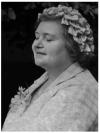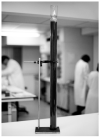The First Treatment for PKU: The Pioneers-Birmingham 1951
- PMID: 33804699
- PMCID: PMC8006244
- DOI: 10.3390/ijns7010019
The First Treatment for PKU: The Pioneers-Birmingham 1951
Abstract
Prior to the introduction of newborn screening, Phenylketonuria (PKU) was a devastating disorder with affected individuals usually committed to a life in care in large institutions (asylums). Newborn screening only began after it was shown that those with PKU could be treated with a modified diet and could subsequently lead normal lives. The first production of a diet and the demonstration of its effectiveness was thus a key milestone in the history of both PKU and newborn screening, and took place in Birmingham, UK, in 1951. The pioneers were a two-year-old girl called Sheila Jones, her mother Mary, and three dedicated professionals at Birmingham Children's Hospital: Evelyn Hickmans, John Gerrard and Horst Bickel. Together, they changed the course of PKU for those across the world. This review summarises the history and achievements of this team who opened the door to PKU treatment and the introduction of newborn screening.
Keywords: Birmingham history; dietary treatment; phenylketonuria; screening.
Conflict of interest statement
The author declares no conflict of interest.
Figures







References
-
- Følling A. Über Ausscheidung von Phenylbrenztraubensäure in den Harn als Stoffwechselanomalie in Verbindung mit Imbezillität (The excretion of phenylpyruvic acid in the urine, an anomaly of metabolism in connection with imbecility) Z. Für Physiol. Chem. 1934;227:169–176. doi: 10.1515/bchm2.1934.227.1-4.169. - DOI
-
- Jervis G.A. Phenylpyruvic oligophrenia: Deficiency of phenylalanine oxidising system. Proc. Soc. Exp. Biol. Med. 1953;82:514–515. - PubMed
Publication types
LinkOut - more resources
Full Text Sources
Other Literature Sources

